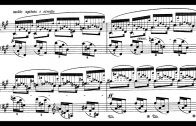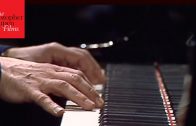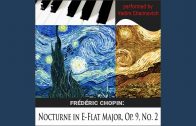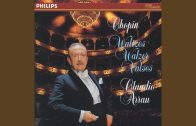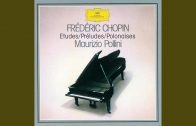Chopin: 24 Preludes, Op.28 (Blechacz)
Sometimes you’re listening to a recording, and thinking it’s pretty good, and then something happens which makes you go, “Woah, wait a minute — what was *that*?” Blechacz’s recording of the Chopin Op.28 preludes (taken from a 2007 live concert at the Concertgebouw in Amsterdam), is absolutely full of such moments of elegance and subtlety. Nothing he does is extreme (cf Pogorelich), but he has such fantastic articulation that he can pull of microscopic miracles of shading and colour — not in the Horowitzian manner, which is straightforwardly stunning, but in an introspective and (occasionally) lithely playful way. As you’ll see, often this touch is used to emphasise structural elements in the preludes, rather than merely decorate. I’ve listed out such moments below so you can follow them.
No.1 – 00:00 (Note the subtle textural shift at 00:23)
No.2 – 00:37
No.3 – 02:42 (Note how carefully the detached nature of the melody is observed, as well as the emphasis on tiny harmonic changes, such as the C-natural at 2:54)
No.4 – 03:37* (A marvellous rendition. Note how the surprising dynamic range matches the important harmonic shifts, the LH sotto voce, and the rubato used to lengthen the last beat of the bar when there’s a dotted quaver – semiquaver subdivision of the beat. This is an important structural element of the prelude which divides it up into its constituent sections.)
No.5 – 05:32 (Note the clarity of the voicing and the way Blechacz begins the piece.)
No.6 – 06:06 (Note the crescendo – decrescendo arc of the LH)
No.7 – 08:07
No.8 – 09:01* (A fantastic rendition. Perfect dynamic control (10:07 and 10:25 are representative), and some incredible textural shading (the second or so at 09:26, the LH countermelody at 10:12).)
No.9 – 10:54 (Note the doubled bass at 11:54, and the sudden dynamic shift and emphasis on the LH countermelody that highlights the harmonic change at 11:23)
No.10 – 12:25
No.11* – 12:58 (Another gem. Note the anti-crescendo at 13:08 leading to the beautifully tender sequence at 13:10, and the bass shading at 13:18 leading to the emphasis on the LH immediately after).
No.12 – 13:36 (Note the textural changes at 13.57)
No.13 – 14:59
No.14 – 18:06 (Note the countermelodies, and how they are shaped to emphasised harmonic shifts)
No.15* (Raindrop) – 18:41 (The whole thing is a study in legato and sotto voce, really.)
No.16 – 23:23
No.17* – 24:30 (Superb voicing throughout. One example is the sudden emergence of a lower voice at 26:17)
No.18* – 27:19
No.19 – 28:21 (Note the textural clarity.)
No.20* – 29:40 (Note the brilliant decision to emphasise the inner voice at 30:43, which demonstrates an important structural feature of the prelude, viz. the close relationship between the prelude’s two apparently disparate sections: the opening theme, and the chromatic theme.)
No.21 – 31:26 (Note the legato swell of the LH, and the hushed brightness of 32:05, with the LH nearly silent)
No.22 – 33:08
No.23* – 33:46 (Note the legatos and the subtle pedalling to ensure no trills are smudged.)
No.24* — 34:42 (Note yet again the melodic clarity and the entrance of the un poco espressivo at 35:55).
